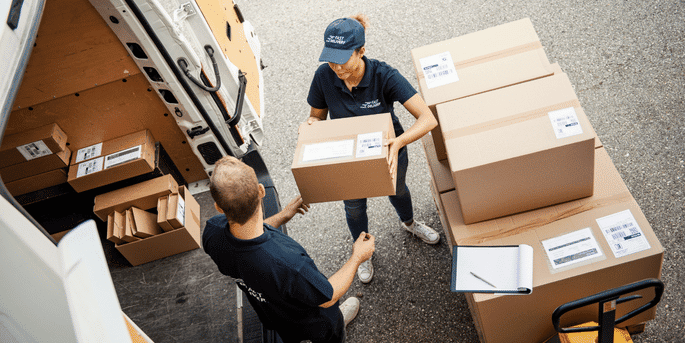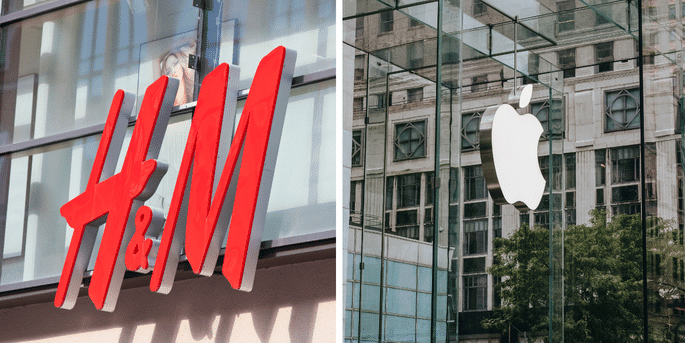Reverse logistics involves managing the return and reuse of products and materials. It encompasses systems and processes that facilitate the return of items to manufacturers or retailers for repair, refurbishment, or recycling.
Companies face challenges with reverse logistics despite its benefits, such as boosting customer satisfaction and cutting costs. Without efficient systems, they risk financial instability and increased operational costs.
Implementing software solutions can streamline these complex processes. HashMicro Trading ERP Software integrates distribution activities, enhancing efficiency and reducing costs, while fostering new revenue streams.
This article will delve into strategies for optimizing reverse logistics to improve your bottom line. With the right tools and insights, businesses can transform returns into opportunities for growth.
Key Takeaways
|
Table of Content:
Table of Content
What is Reverse Logistics and Why is it Important?
Reverse logistics refers to the movement of goods from their final destination to the supplier. It typically involves returning a product to the manufacturer or distributor or forwarding it for servicing, refurbishing, surplus, or recycling. It helps companies reduce costs, recover lost revenue, and improve customer service.
Reverse logistics is essential because it maintains an efficient flow of goods. The process reduces costs, creates value, decreases risk, and completes the product life cycle. Gartner Research says that about 70% of businesses plan to invest in the “circular economy.”
This circular economy follows traditional logistics and continues through what Gartner calls a closed-loop supply chain, which can be further optimized with wholesale distribution software to enhance efficiency and sustainability.
When is Reverse Logistics Used?
Organizations use reverse logistics when goods move from their final destination back through the supply chain to the seller and possibly back to the suppliers. The goal is to get value back from the product or eliminate it. With the expansion of e-commerce, returns have grown increasingly prevalent and are worth close to a trillion dollars per year. To manage this efficiently, many companies are now leveraging logistics software to streamline reverse logistics operations and gain better visibility into the returns process.
The goals of reverse logistics are to recoup value and maintain client retention. Reverse logistics is used in savvy businesses to increase customer loyalty, repeat business, and reduce return-related losses. Less than 10% of in-store purchases are returned, in contrast to at least 30% of online transactions.
The Difference With Traditional Logistics
The conventional product flow begins with suppliers and continues to a factory or distributor. The products are then distributed to retailers and customers. Beginning with the consumer, reverse logistics management returns products to any point along the supply chain.
Well-designed supply chains can adapt to changes and handle some reverse logistics needs. This reverse process can send products back one step in the chain or to the original supplier. They can also return products to standard sales or discount channels (like liquidators).
How Does It Work?
The Reverse Logistics Association designs Secure, Quick, and Reliable Login (SQRL) codes for packaging to overcome logistical issues. Reverse logistics is in charge of handling returns and buying surplus goods and materials.
The process is also responsible for handling any leases or refurbishments. Companies in the beverage business want to get the value of their containers back by reusing them.
Steps to Good Reverse Logistics
- Process the return
When a customer requests a return, the returns process begins. This step should include getting a return authorization and identifying the product’s condition. This procedure also includes scheduling return shipments, issuing refunds, and replacing defective goods. - Deal with returns
Once a product is returned, inspect it and establish its return category. If you’ve optimized reverse logistics, you’ll know where the product goes before it arrives. Sort products into the fix, resell as new, resell as a return, recycle, scrap, or refurbish. - Keep returns moving
Reduce your daily waste by sending repairable items to the repair department. The product you send to the repair department will be fixed and delivered back to you within a few days. If you send an item to the repair department without indicating that it needs fixing, it may take longer than expected to get back to you. - Repair
After reviewing the returned item/equipment and determining whether it can be repaired, move it to the repair area. If not possible, sell any sellable parts. If the equipment can’t be repaired, you should sell any sellable parts and recycle as much as possible. - Recycle
Do not throw away any parts or products that can be reused or recycled. Any parts or products you cannot fix, reuse, or resell should be sent to the area for recycling.
Also Read: How Does ERP Guide the Trading Industry to Success?
Reverse Logistic Components
Several components are typically involved in a reverse logistics system:
- Collection: This includes the processes and systems used to collect returned or excess products and materials. This may involve specialized packaging and labels and transportation and storage systems.
- Inspection and sorting: This involves examining returned products and materials to determine their condition and suitability for reuse, repair, or recycling. This may involve testing and assessment, as well as sorting and categorization.
- Repair and refurbishment: This includes the processes and systems used to repair and restore products to their original condition. This may involve cleaning, testing, and replacing damaged or worn parts.
- Distribution and reuse: This involves the processes and systems used to distribute refurbished or repaired products for reuse or resale. This may involve inventory management, transportation, and distribution systems.
- Recycling: This includes the processes and systems used to break down products and materials into their parts, which can be used to create new products. This may involve specialized equipment and processes, such as shredding, melting, or chemical treatment.
Overall, the goal of a reverse logistics system is to efficiently and effectively manage the return and reuse of products and materials to reduce waste, lower costs, and increase efficiency and sustainability.
What Is 5R?
The five Rs of reverse logistics refer to five key considerations that are typically involved in managing the return and reuse of products and materials:
- Return: The process of returning a product to a manufacturer or retailer.
- Repair: The process of repairing a product so it can be used again.
- Refurbish: The process of restoring a product to its original condition, often including cleaning and testing.
- Reuse: The process of using a product again, either as is or after minor modifications.
- Recycle: The process of breaking down a product and using its components to create new products.
These five Rs are used to create and operate a reverse logistics system, which supports the return and reuse of items and materials. Moreover, reverse logistics can help companies reduce waste, lower costs, and increase efficiency while promoting sustainability and resource conservation.
Examples of Reverse Logistics
Many well-known brands and companies, like H&M and Apple, have realized how closely connected reverse logistics and sustainability are:
- Recycled clotheslines. H&M has placed in all of its stores where you can leave your old clothes, which will then be used to make a line of clothes made from recycled materials.
- Recycled devices. When a consumer wants to buy a new gadget in-store, Apple offers a discount if the old product is returned. The material will be recovered and used to create a new one. This happens whenever a customer wants to upgrade their current Apple product.
- Outlet stores. Some companies have designated places where they sell their products at lower prices. Most of the time, these items were returned to the seller because they were broken or the season had changed.
Conclusion
In conclusion, reverse logistics is an important aspect of supply chain management that involves the design and implementation of systems and processes to support the return and reuse of products and materials.
Reverse logistics can help organizations reduce waste, lower costs, and increase efficiency, while also promoting sustainability and resource conservation.
In large companies, it is important to have an integrated management system that has visibility of all processes in one platform. At the same time, all the other warehouses worldwide shall also have access to these details on a real-time basis through ERP solutions.
As an ERP software provider, Hashmicro offers ERP Trading Software that integrates operations and facilitates wholesale distribution. You can get a free demo here.


























































